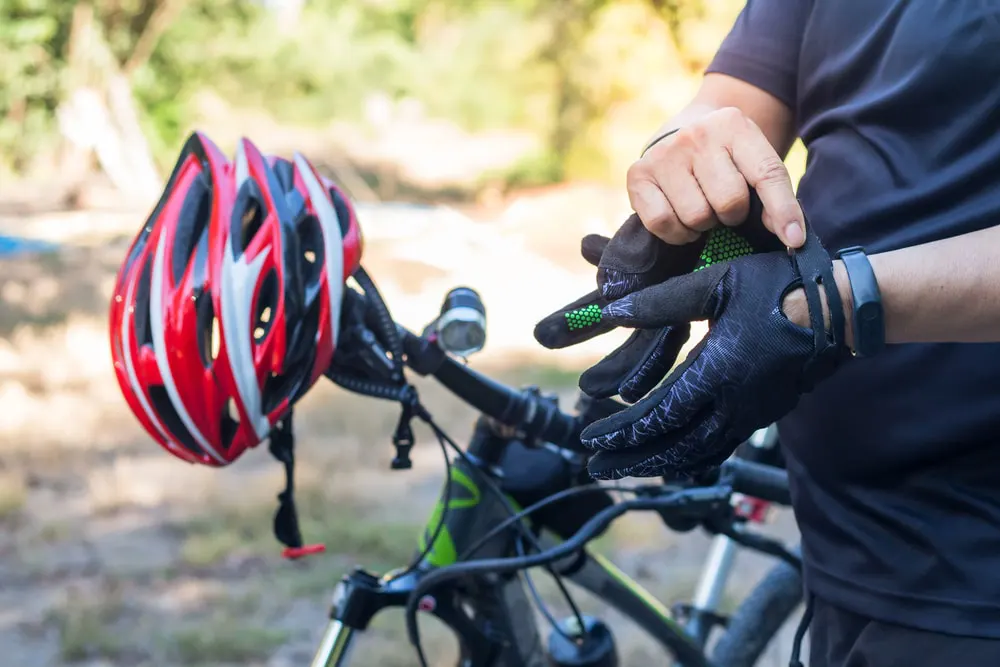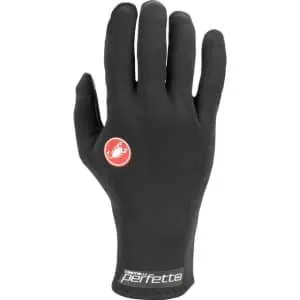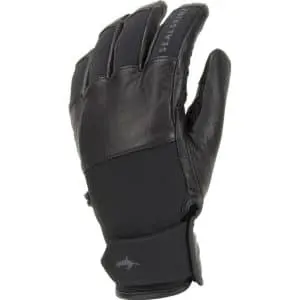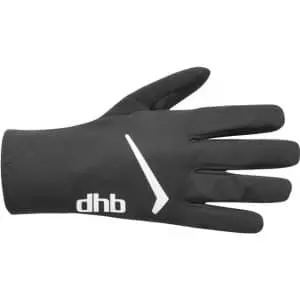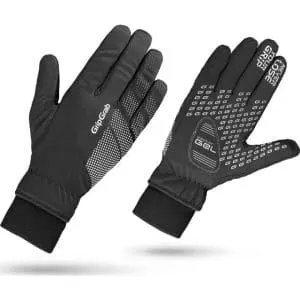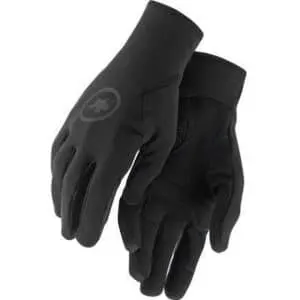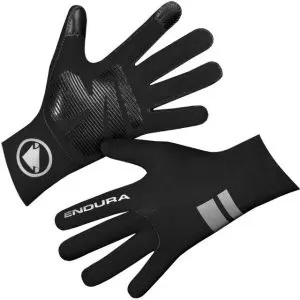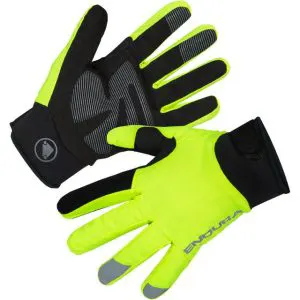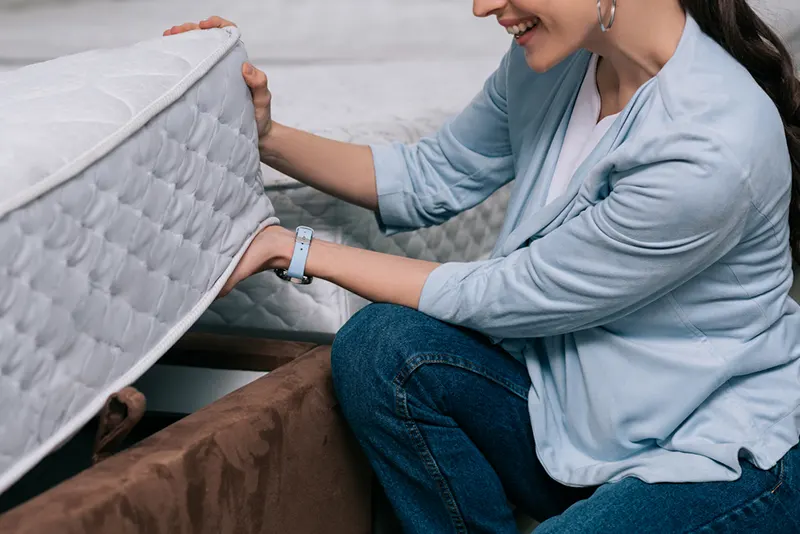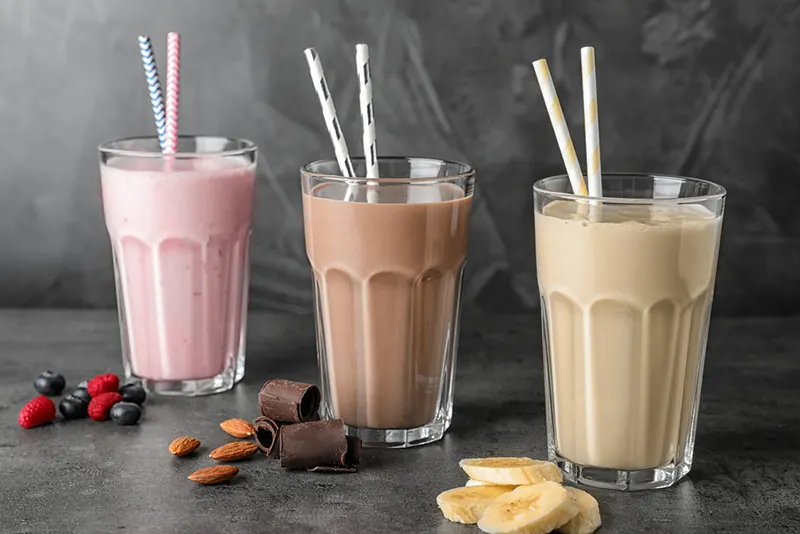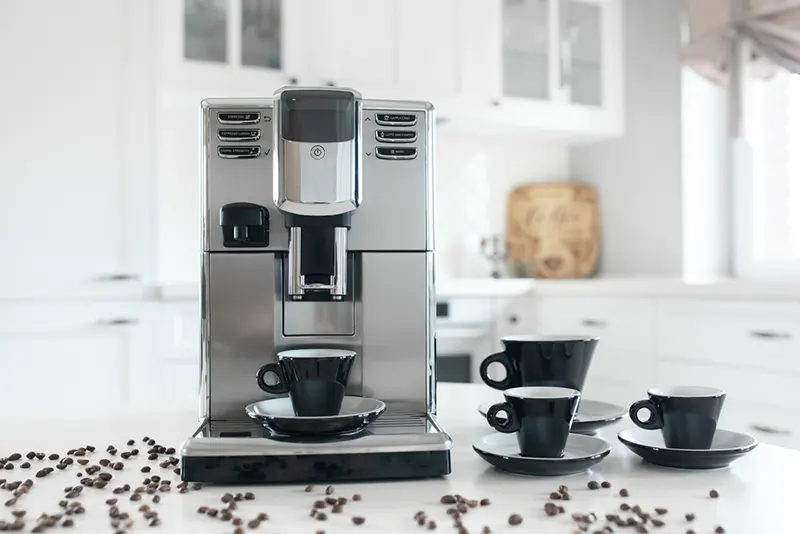Cycling gloves are worn for a number of reasons. It helps cushion your hands and keep calluses at bay. Gloves can help keep your hands warm. Other gloves can protect you from a spill.
The best cycling gloves don’t just look good with the rest of your gear. Also, they protect your hands from road rash in the event of a crash. It helps improve grip and comfort on longer rides and keeps the chill at bay in the spring.
Whereas many riders still prefer to ride gloveless in the summer, there are plenty of alternatives to satisfy even the most ardent anti-glove campaigners. Cycling gloves come in a variety of styles, from full-finger warmers to half-finger mittens that keep you cool. Some have gel or foam padding on the palm to protect nerves, while others will have insulation and waterproofing.
While it’s still quite cold outside, the best winter cycling gloves are naturally your best bet – for the time being. However, the summer is on the way, and with it, a slew of short-finger options from the best cycling gloves.
Finding the best cycling gloves determine by the type of riding you do. Read on for our pick of the best cycling gloves on the market, and if you can’t find what you’re looking for, there’s a buying guide at the bottom.
Castelli Perfetto Ros Gloves │ Best Overall Cycling Gloves
- Great close fit
- Wind and water protection
- Breathability prevents sweaty hands
We loved the Castelli Perfetto Ros gloves so much that we have to mention this item first of all.
This made with the latest Gore Infinium Wind stopper fabric, strikes a difficult balance between adequate insulation, water repellency, and windproofing. Lastly, the bar feels and rides comfort on the other. It’s something that the Altura Firestorm Reflective Gloves and Santini 365 Origine Long Finger Gloves excel at. However, when you’re out on the trail, it’s clear that these are the best winter cycling gloves.
With a light fleece lining, there’s enough warmth to keep the hands warm, and they stay dry even after hours of light rain. Once the water gets in, your hands stay warm, and you have enough dexterity to work the controls and keep yourself fed while riding.
Sealskinz Waterproof Cold Cycling Gloves with Fusion Control │ Best for Wet Weather
- Merino wool lining keeps hands very warm
- Goatskin palms allow for a good grip of handlebars
The innovative Gloves with Fusion Control technology are made up of three layers. First, the merino wool on the inside, a hydrophilic waterproof membrane on the outside, and a durable goatskin with a soft shell on the inside.
On test, these gave effective protection on a cold, rainy day in the saddle, with little to no water ingress. We were impressed by the windproofing capabilities of these snug-fitting gloves. Users found these to be very effective at keeping our hands warm in milder winter temperatures ranging from 39 to 50 degrees Fahrenheit/ four to ten degrees Celsius.
The goatskin palms not only kept the elements at bay. However, they also perform admirably when it comes to controlling the handlebars or operating the brakes. This is a huge plus for anyone who struggles with hand motor control in the cold or the slippery sensation in the rain.
The triple layers, on the other hand, are quite bulky, so if you enjoy frequent gear changes and fiddling with minor bike adjustments while riding. You may find them too bulky.
The only other thing to consider is that you can’t just throw them in the washing machine. In theory, natural fabrics should not produce the odors that synthetic fabrics do. However, they are probably not the best choice for an off-road muddy adventure.
DHB Waterproof Cycling Gloves │ Best for Budget Option
- Great value for money
- Decent level of water resistance
- Lightweight
- Warm in single digits
- Good reflective detailing
The dhb Waterproof gloves include here because of their water-resistant properties. However, they are also considering a good all-arounder. They combine a soft fleece lining with tough water and a windproof outer shell that keeps our hands warm and dry in heavy rain and temperatures in the low single digits. On slightly warmer days, the gloves’ lack of bulk made them a good choice, emphasizing their versatility.
The major gripe was the gloves’ short cuff, which could not be adjusted. However, at this price point, it’s difficult to complain too much, and the dhb gloves have plenty of useful details, such as the thumb-nose wipe, palm pad, and reflective details. In general, a good winter glove for those on a tight budget.
GripGrab Ride Waterproof Winter Cycling Gloves │ Best for poor weather
- Large reflective details
- Good insulation even on wet days
- Grippy palms
- Comfortably waterproof
The gloves really suit the conditions in the UK. These GripGrab Ride Waterproof Winter gloves have a breathable membrane and keep you warm when it’s cold outside. Balancing the need for thermal insulation while maintaining dexterity can be difficult for gloves to master. However, we found these performed admirably, keeping their warmth even on wet days thanks to effective waterproofing.
GribGrab’s own DoctorGel pad features at the heel of the palm, which we found to be in just the right place when riding on the hoods during testing. The palm, forefinger, and middle fingertips are gripped with silicone, and the thumb has a touchscreen tip as well as terry back. This same bottom half of the back has a reflective dot pattern.
The long cuff extends some way over the wrist and closes with a Velcro tab, similar to the Specialized Prime Series Thermal Gloves. Though it’s not quite as slimline and has to fasten up over your winter jacket sleeve.
The volume of reflective detailing on the gloves makes these the best winter cycling gloves to wear on night rides in all weather, with stand-out hand signaling that other road users can’t help but notice.
The only thing to keep in mind is that these run small, so you may need to size up.
ASSOS Assosoires Winter Cycling Gloves │ Best for wind blocking
- Excellent windproofing
- Comfortable fit
- Good dexterity with low bulk
- Lightweight compared to other winter gloves
The Assos Assosoires Winter Gloves have all the quality and style you’d expect from a product of this price and brand.
On test, we discovered that this pair’s wind-blocking properties were excellent, and they really impressed us with their warmth for such a low-bulk glove. They’re great all-rounders because of their dexterity. This means there’s not much that can’t be done while wearing them, including zipping up jackets and locking the front door.
The sweet spot for these great winter cycling gloves in terms of weather is probably around the 44°F/ 7°C mark in the dry mark, as they aren’t the best on the rainiest of days, with the microfiber palm breaching water very quickly.
There isn’t an adjustable Velcro wrist closure like most gloves these days, and while it’s not quite as long as the Santini 365 Origine Long Finger Gloves. It’s still long enough to sit under your winter jacket or jersey sleeve without gaps appearing.
The only real sour note is that the palm foam and gel paddling arrangement may not be to everyone’s liking. If you liked the sound of the minimalist Rapha Pro Team Winter Gloves, these aren’t for you. However, if you’re planning a winter Roubaix, these might be just what you’re looking for.
Endura FS260-PRO Nemo Cycling Gloves │ Best for simplicity
- Simple design and functionality
- Keep your hands warm at low temperatures
- Supple and flexible
- Competitively priced
Even though we saw these a while ago, these cycling Gloves are still a popular choice and the best gloves for cycling in cold weather due to their simple but effective design.
These winter cycling gloves are made of neoprene and function exactly like a wetsuit. However, unlike Sealskinz Waterproof Cold Weather Gloves, which are one of the best winter cycling gloves for keeping the wet out, the Endura FS260-Pro Nemo Gloves don’t stop water from reaching your skin. Instead, they slow it down and warm it up, keeping your hands warm even when they’re wet. The minor drawback is that if it isn’t raining, you only have a small temperature range before your hands start sweating because neoprene isn’t the most breathable fabric.
Doing away with all padding in favor of a silicone print on the palm results in a true minimalist construction, and the unrestricted malleability makes these a great grab-and-go winter glove. However, some may prefer a touch of extra palm padding.
Endura Strike Cycling Gloves │ Best for affordable water and windproofing
- Water and windproofing
- Surprising levels of dexterity and radial grip
- Reflective details
- Good size nose wipe
- Great price point
We couldn’t help but praise Endura’s fantastic winter cycling gloves. They aren’t as refined as the higher-end brands. However, with impressive wind and water resistance, they could easily fit into both categories.
The Endura Strike gloves have a gel palm as well as silicone, making them great for grip on the bars and controls in all weather. Though, they lack the tall cuff, which longer-armed riders may find creates a glove-to-jacket/jersey gap.
The stretch windproof panel across the back of the gloves walked a fine line between providing bitter wind protection and allowing for breathability. While they won’t keep your hands dry indefinitely in a downpour, the waterproofing outperformed the price point assumption. Furthermore, we discovered that as long as you don’t remove your gloves, even when wet, they will keep your hands warm, thanks to their impressive wind-blocking qualities.
After testing the e-touch features, we discovered that at low temperatures, they didn’t work well with swiping and some touchscreen navigations, and their bulk didn’t allow for the finesse required for typing.
What Are The Benefits of Cycling Gloves?
Gloves provide additional grip and protection for cyclists, preventing sweaty hands from slipping from bar grips and providing palm protection in the event of a crash. These gloves range in price and application, from lightweight summer mitts with basic cushioning and crash protection to highly technical, fully weatherproof winter gloves for polar conditions.
The type of gloves you wear determines the sport you participate in as well as the weather conditions. Determine your priorities based on the type of riding you do and the weather, and then select your gloves accordingly. Breathability, wicking, protection, waterproofing, grip, and warmth are all important considerations for designers when creating various types of gloves.
We are glad by the number of cyclists who do not wear gloves. We believe they are necessary for a number of reasons.
Warmth
This is an obvious advantage of wearing cycling gloves. If warmth is your true goal, go with full-finger gloves. The open-finger gloves aren’t so much for warmth as they are for other purposes. When you’re driving at 20 mph on a cool fall day, you’ll be surprised at what temperatures your hands will start wishing for gloves. It is significantly higher than you might think.
Breathability
You may be wearing the gloves for reasons other than keeping your hands warm, such as protection against twigs or falls. If so, you’ll want something that breathes well. Whether they are appropriate for the type of riding you intend to do, open-finger gloves are inherently more breathable.
Cushion
For those planning a century ride or other longer rides, the contact point between your hand and the handlebar can become sore and tender, even cutting a ride short in some cases. A good glove will add a layer of padding to that contact point, removing one of the impediments to your new longest ride ever.
Protection
A pair of gloves can mean the difference between a cut hand and not for mountain bikers who ride on single-track trails on a regular basis and may have the occasional spill or unplanned encounter with a tree branch against your knuckle. If you know you’ll be hitting a lot of branches and limbs while riding, you might want to invest in a padded, full-finger glove.
All-Purpose
Gloves make a variety of tasks on the bike a little easier. For example, if you ride over a shard of glass on the road, your first instinct may be to brush the shards off your wheel. Without gloves? You’ve asked for it. Wearing gloves? Easy. Just let the wheel roll by your glove, and after a rotation or two, your tire is glass-free.
Can you Wash these Cycling Gloves?
We are not the manufacturer of your gloves, so always follow the manufacturer’s instructions for washing and caring for them. Now that that’s out of the way, we can wash ours. We know some people who throw their gloves in the washing machine after almost every use, but we don’t recommend it — it will certainly shorten the life of your gloves.
Every 250 miles or so, we like to hand wash the gloves in a sink of warm, soapy water. Perhaps a little more in the summer when our hands sweat more. Allow them to air dry before wearing them for a few minutes while they are still damp to restretch them to their original shape. Shrinkage is a risk, but so is a horrible, foul stench if your gloves are never washed. We recommend washing them only when necessary and keeping in mind that they will not last forever.
Are gloves required for road cycling?
The best road cycling gloves are not a must-have piece of cycling equipment. However, they are a great addition to your cycling wardrobe and offer numerous benefits. Particularly, they provide an extra layer of protection in the event of a collision: road rash on the palms of your hands is never fun, so wearing gloves will literally save your skin.
Furthermore, depending on the type of gloves you purchase, you can benefit from gel or foam padding on the palm to make your ride more comfortable, as well as a sticky silicone print to help you maintain a firm grip on your bars and thus full control of the bike.
Eventually, having the ability to wipe sweat from your eyes and nastier stuff from your nose is an excellent use of your gloves.
Is it necessary to wear cycling gloves in the summer?
When it’s hot outside, it’s tempting to skip the gloves entirely – after all, the less you wear, the cooler you’ll be, right? Perhaps, but as we mentioned above, if you do find yourself sliding across the tarmac, your hands will thank you for wearing mitts that protect them.
Fortunately, there are many hot-weather cycling gloves and mitts designed specifically for when the temperatures rise. These will be made of a breathable and moisture-wicking thin and lightweight fabric.
Things to Look for in Cycling Gloves
Another thing to think about is palm padding. If you ride on rough terrains, such as gravel or potholed roads, having some padding to cushion the blows will allow you to ride for longer and stay comfortable.
- Glove components: Gloves are made up of several components, including the upper, palm, fingers, and cuffs.
- Uppers: This is the glove’s ‘back.’ The material is often thicker here to provide additional wind and weather protection, and it may have a waterproof coating membrane. That’s the best waterproof cycling gloves you want to have with.
- Palm: Cycling gloves have thicker palms made of leather or synthetic leather to provide a better grip on the handlebars.
- Fingers: ‘Full-finger’ gloves cover the entire finger, whereas fingerless gloves are frequently referred to as mitts.’ The former provides more warmth and protection for winter trail/gravity riding, while the latter is a popular summer option for cyclists who want the grip and palm protection of a glove.
- Cuffs: The part of the glove that wraps around your wrist. It must be snug and comfortable – too tight and the glove will restrict circulation, too loose and the glove will not feel snug. Cuffs should ideally be adjustable to avoid flapping or chafing.
- Materials: Cycling gloves are typically made of synthetic materials such as polyester, acrylic, fleece, polypropylene, or a combination of these.
- Polyester has high breathability and sweat-wicking ability, but it has little wind- or waterproofing ability.
- Acrylic: Breathable, stretchy, and warm, but not particularly weather-resistant.
- Fleece: Used in running and biking gloves in the winter, fleece is warm and insulating but not very breathable. Many gloves have a sweat-wicking microfiber or toweling panel on the upper.
- Polypropylene: This material is more resistant to wind and weather, but it is less effective at moisture management.
Should cycling gloves fit snugly or loosely?
What to look for is highly dependent on the type of riding you do. As previously stated, if you’re road cycling in the summer and trying to avoid sweating, a lightweight and breathable fabric is a great hot weather option.
If you frequently ride in the dark or in low light conditions, you should look for gloves with hi-vis and/or reflective details, as they play an important role in signaling your intentions to other road users.
Cycling gloves will fit differently depending on their weight but look for a snug fit that doesn’t restrict dexterity or range of motion. Gloves that are too tight may restrict circulation; gloves that are too loose may bunch up and cause hotspots or even blisters.
Why does my hand go numb when cycling?
You are not alone if you experience numbness or nerve pain in your hands after a long ride. It’s actually quite common, which is why cycling gloves come with a variety of padding options.
This numbness is commonly referred to as handlebar palsy, and it is caused by pressure on your ulnar nerve after spending a significant amount of time leaning on your handlebar.
While a good quality padded pair of gloves can help, you should also consider changing your bar positioning to be more upright, as well as switching up your hand positions frequently while riding.
Which cycling gloves are the most comfortable?
Cycling gloves come in a variety of padding levels, ranging from racing mitts with minimal cushioning to plush gel-padded versions designed to keep your palms comfortable for hours on end.
When it comes to padding, there are a few different schools of thought. Most brands prioritize cushioning the heel of your hand, whereas others place the padding in the middle of your palm to relieve nerve pressure. What works best for you is a matter of personal preference and the terrain you’re riding on – glass-smooth tarmac won’t necessitate padded cycling gloves, whereas hours of washboard gravel will.
The palm of most cycling gloves is made of synthetic leather, which breathes well and is resistant to general wear, tear, and abrasion.
Is it better to wear half-finger or long-finger gloves?
For road riding, half-finger cycling gloves – or mitts – with a lightweight, breathable material over the back of the hand and a synthetic leather palm to protect against abrasion are more common. There is no loss of dexterity with your fingertips free, and you will be able to use smartphones and touchscreens with ease.
However, half-finger gloves aren’t perfect, with reduced protection, comfort, how difficult the suckers are to get off your hands, and the resulting tan line being common reasons to avoid them. When lining up for a crit, in case of a pile-up, or on a mixed-surface ride, we usually wear lightweight full-finger gloves.
Do I need a nose wipe?
If you’re anything like us, the moment you start pedaling, your nose begins to run. Look for cycling gloves with a nose wipe on the thumb made of fleece or terry cloth, as these materials are gentler on the skin.
Get Your Best Pair of Cycling Gloves
Choosing a pair of cycling gloves isn’t difficult, but finding one that fits your riding style, common conditions, specific needs, and personal preferences can take some trial and error.
The great news is that as long as you do some preliminary research and keep an eye on online customer feedback, it’s difficult to go wrong with a pair of bike gloves.
Even now, you should consider purchasing from a retailer that offers at least 30-day refund policies—even on used items that have been removed from their original packaging—as well as manufacturers who stand behind their products with at least 6-month warranties.
Admittedly, if you’re new to cycling, you might be surprised at how much wear and tear your gloves will endure—as well as how much each company’s design and overall feel can differ.
